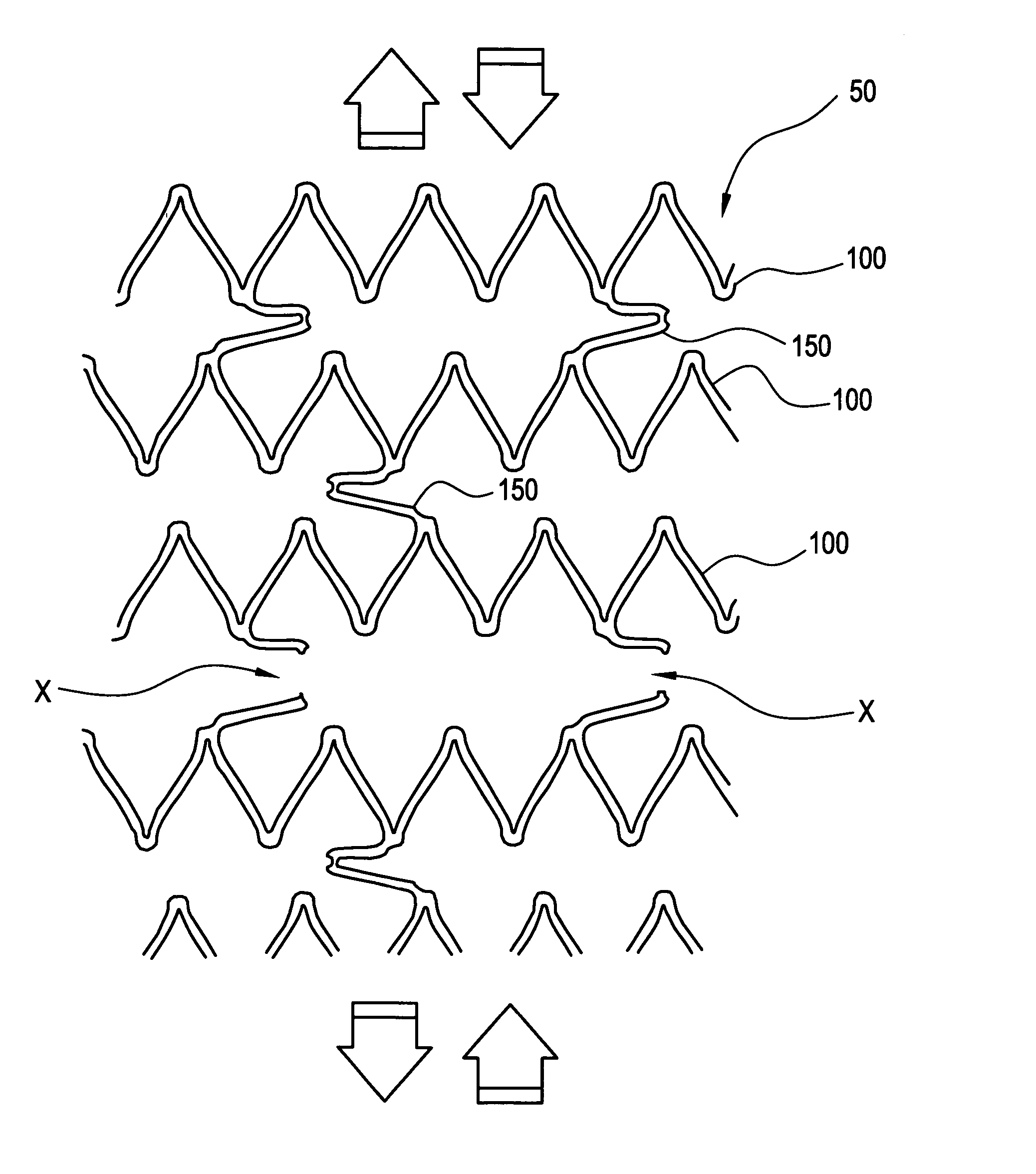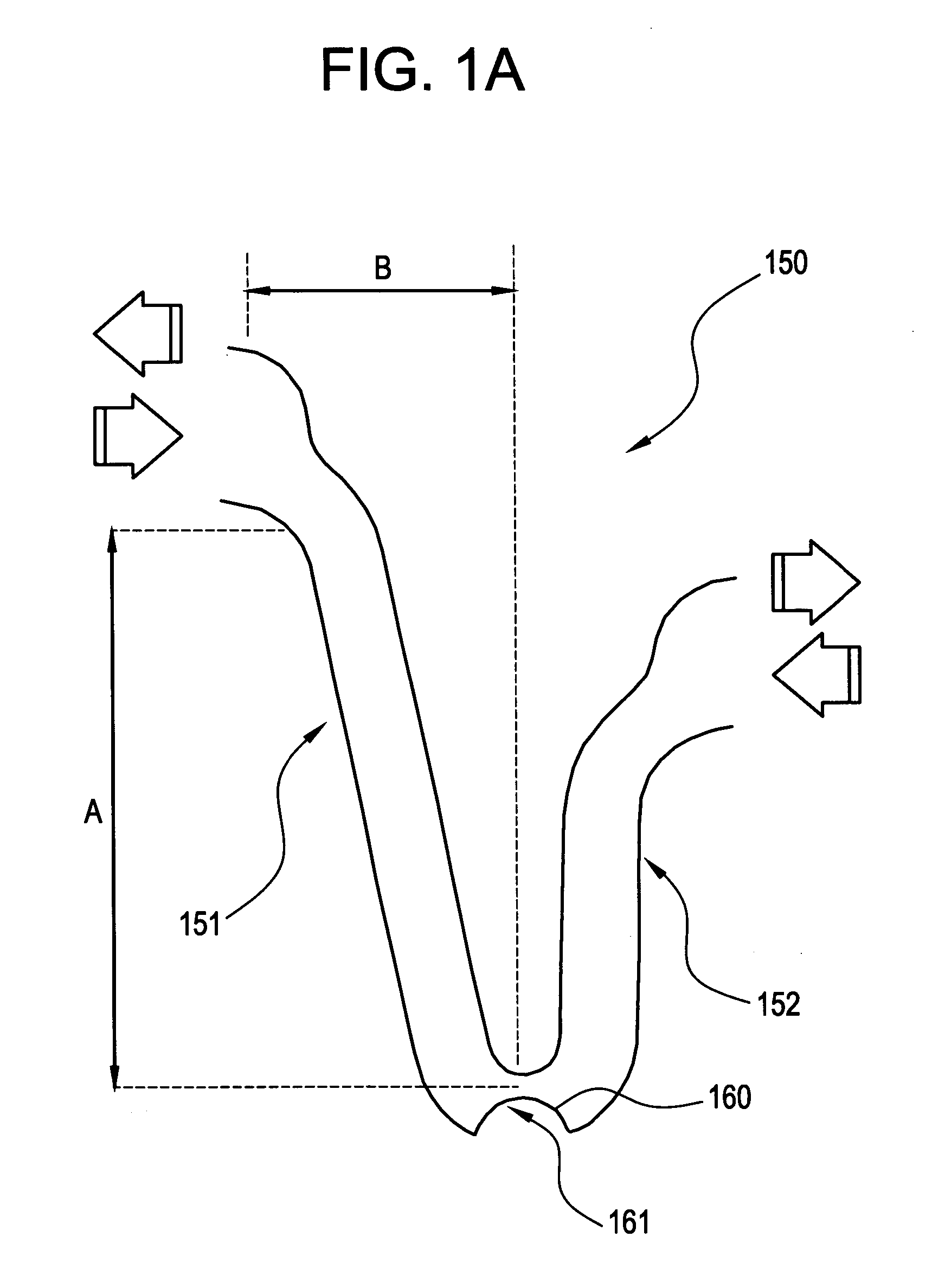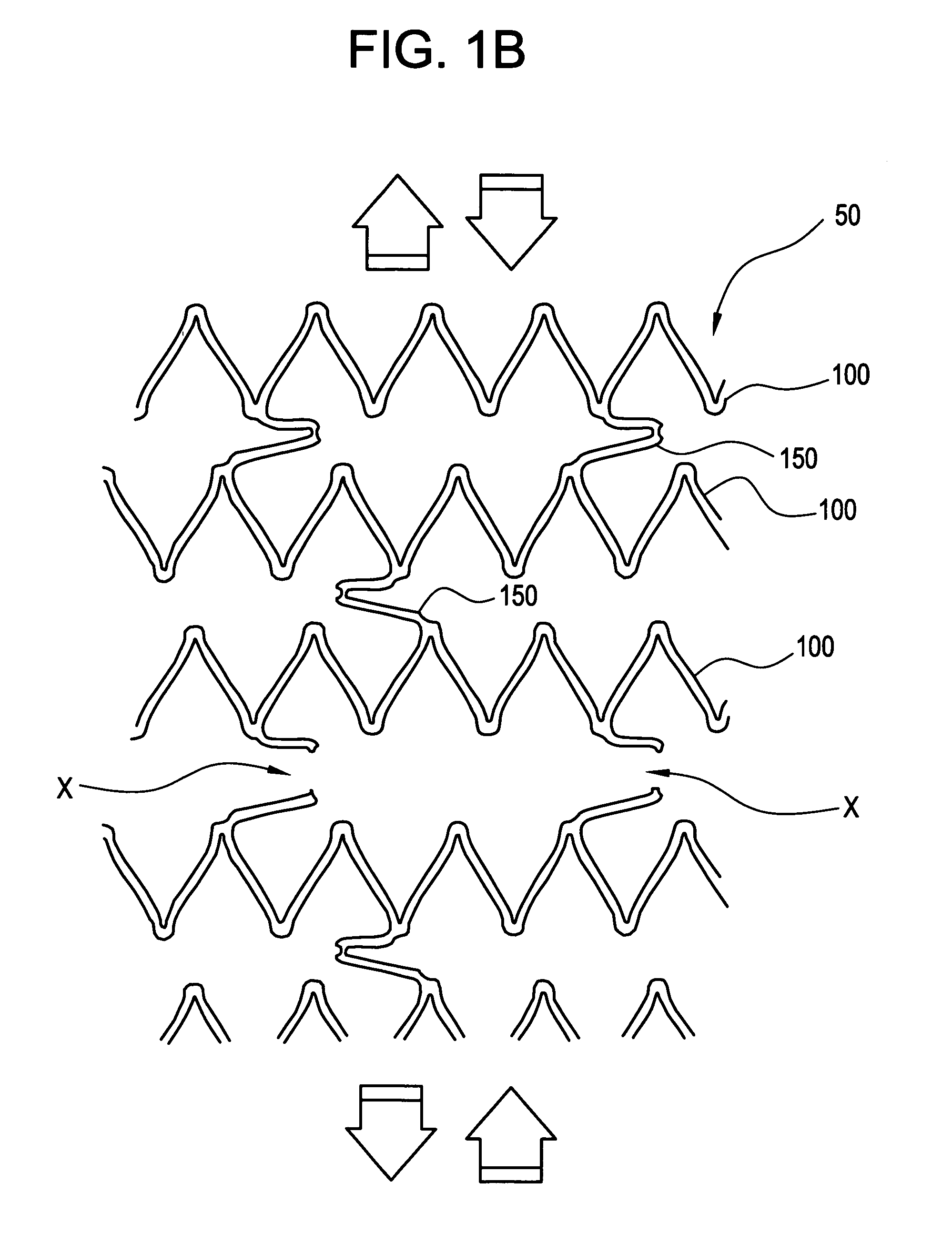Intraluminal medical device with strain concentrating bridge
a technology of strain concentrating bridge and medical device, which is applied in the field of intraluminal medical device with strain concentrating bridge, can solve the problems of fatigue and fracture of notched strain riser at the focal point, and achieve the effect of improving the healing and durability of clinical outcomes
- Summary
- Abstract
- Description
- Claims
- Application Information
AI Technical Summary
Benefits of technology
Problems solved by technology
Method used
Image
Examples
Embodiment Construction
[0037]FIGS. 1A-1C illustrate a stent 50 comprised of a series of axially adjacent segments 100. These segments 100 may be comprised of stainless steel or Nitinol, as in the Palmaz™ or Palmaz-Schatz™ stent made by Cordis Corporation or the Smart Stent™, also made by Cordis Corporation. These segments 100 are intended to be of strong radial strength when emplaced within the body. The segments 100 may be self-expanding, may be plastically expanded by removal of a restraint, or may be expanded using a balloon catheter (not shown). In any event, the expansion of the segments 100 ideally occurs when the stent is positioned, as intended, within the vessel or other passageway of the patient.
[0038] In the embodiment shown in FIGS. 1A-1C, some of the axially adjacent segments 100 are connected by at least one frangible strain concentrating bridge 150. As shown in FIGS. 1A-1C, three frangible bridges 150 are spaced around each segment 100. The artisan will appreciate, however, that other arra...
PUM
 Login to View More
Login to View More Abstract
Description
Claims
Application Information
 Login to View More
Login to View More - R&D
- Intellectual Property
- Life Sciences
- Materials
- Tech Scout
- Unparalleled Data Quality
- Higher Quality Content
- 60% Fewer Hallucinations
Browse by: Latest US Patents, China's latest patents, Technical Efficacy Thesaurus, Application Domain, Technology Topic, Popular Technical Reports.
© 2025 PatSnap. All rights reserved.Legal|Privacy policy|Modern Slavery Act Transparency Statement|Sitemap|About US| Contact US: help@patsnap.com



